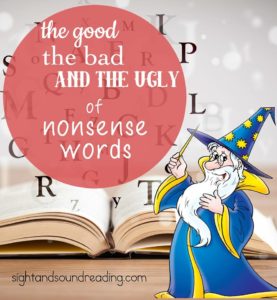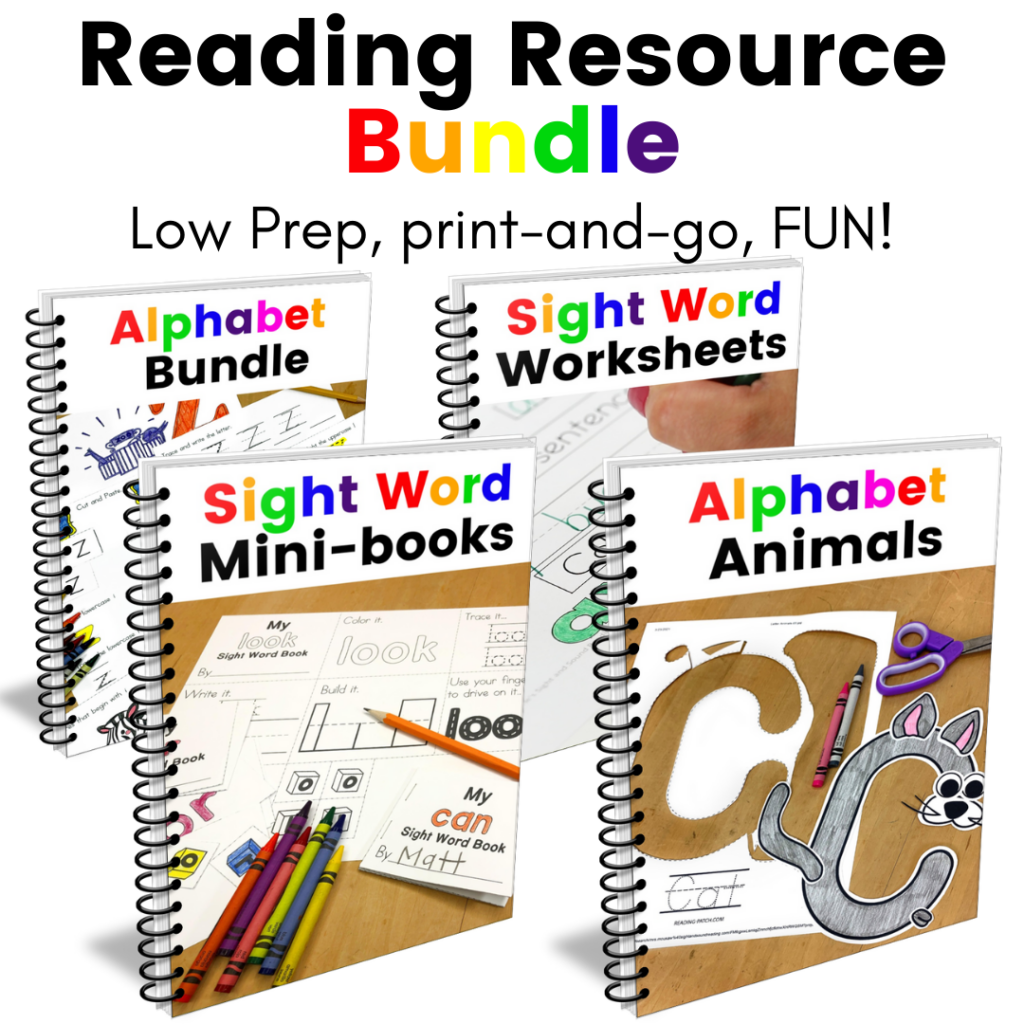Nonsense Word fluency
On Monday I published a post on reading fluency, and what I thought was the “secret sauce” in helping your child learn to read fluently. Today I wanted to talk about nonsense word fluency. Is it important for little readers to be able to read nonsense words fluently? What are some things we can do to increase nonsense word fluency. Why is nonsense word fluency important? When should we not worry about nonsense word fluency? What is the good, the bad and the ugly truth about nonsense words?

What are nonsense words?
Nonsense words that are….nonsense! As silly as that sounds, that is exactly what they are. They are words that are not real words. They are words that do not make any sense. They are words that the reader has to be able to look at and know how to sound out say fluently, yet the word has no meaning. One author that most people know who wrote using a lot of nonsense words is Dr. Seuss. In his book, There’s a Wocket in My Pocket, he asks: Do you ever get the feeling there is a wasket in your basket? Or a nureau in your bureau, or a woset in your closet?
If you can read the nonsense words in the last sentence (wasket, nureau, and woset), easily and quickly, you have nonsense word fluency! When someone hears you read the book with fluency (easily), they would know that even though many of the words have no meaning to you, you still know how to put the sounds together and read them…therefore, it sort of show that you are able to read.
If you think about it, to someone who is not able to read, all words are nonsense words. If you don’t know what the words are, you have to rely on your decoding skills to be able to figure out the words…you are not just relying on memorization. Take the poem, “Jabberwocky” by Lewis Carroll. In it, Lewis Carroll writes, “Twas brillig, and the slithy toves/ Did gyre and gimble in the wabe:/All mimsy were the borogoves,/ And the mome raths outgrabe.” In order to read that sentence fluently, you have to rely on decoding skills to be able to put sounds to the nonsense words.
So, because nonsense words require you to put your thinking cap on when reading them, they are used in schools to test whether a student can read fluently or whether a student needs help with phonics and breaking words down into segments.
So, we know what they are, and we know they are good to help diagnose someone’s ability to read…but, why are they bad? Well, if you are an English language learner, or someone who is struggling to understand the meaning of reading, nonsense words would just confuse you. One of my majors in college was Spanish. I had to read a lot more text in Spanish than I did in English… many of the things I read were old text, and old Inca or Mayan text. Many of those words just made no sense at all to me, and I would have trouble deciding if I should look it up, or just read over it, and I didn’t know what anything meant. Having an English Language learner, or a struggling reader try to read something that has no meaning just makes them feel more frustrated…(and as we learned with reading fluency, we want to give readers confidence, not confusion).
Nonsense Word Fluency
To help English language learners, struggling readers (and really all readers), with nonsense word fluency, take a back to the basics approach. Explicitly teach phonics instruction. Practice word ladders/word families to help build fluency. Then, when you feel you have mastered phonics, add in nonsense words. (We will have a nonsense word fluency activity in a few days!)
If you liked this article, you will also like:
Is my child ready for kindergarten?
Reading Games for kids
Sight Word Reading Program: Days 1-120
Kindergarten Teaching Ideas




